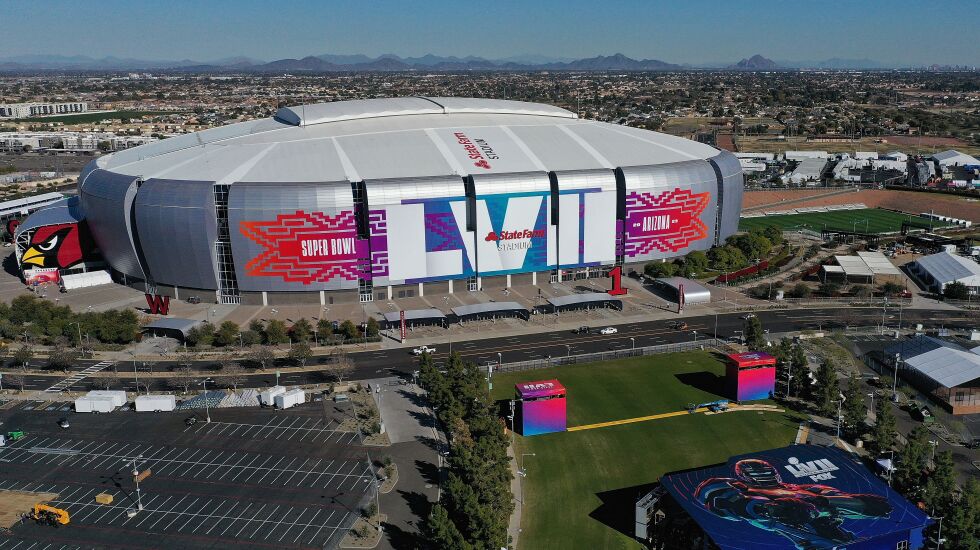
PHOENIX — Andy Reid’s wife, Tammy, grew up in Arizona. The Chiefs coach has been coming to the Phoenix area for more than half his life to visit her family.
“I remember driving from Los Angeles, and I-10 stopped right by where the stadium is,” Reid said this week. “You’d get off and drive through a bunch of fields there to get to Glendale. It’s grown and grown and grown.”
Built 16 years ago for $455 million, State Farm Stadium is the spaceship-shaped symbol of the Valley’s suburban sprawl. An economic ecosystem has developed around it — an arena and a nearby mall with bars and restaurants that fans flock to on game day.
It sounds a lot like what the Bears want to build in Arlington Heights, doesn’t it?
The Bears are in escrow on the 326-acre former Arlington International Racecourse property and hope to close in the next few months. The complex, if built, is expected to feature a domed stadium with hotels, restaurants and shopping. Outgoing Bears president/CEO Ted Phillips said the team wants a “wonderfully 365-day-a-year entertainment district.”
Phillips’ replacement, former Big Ten commissioner Kevin Warren, has a soft spot for games in the Phoenix area. He grew up there and gets to see his family when his teams play at State Farm Stadium. But although he’s a self-professed stadium nerd, he didn’t exactly sing the stadium’s praises last month.
“It’s held up,” he said. “But the issue is the location, that it’s kind of . . . it’s far out.”
Far out? The site of Sunday’s Super Bowl is about 13 miles northwest of downtown Phoenix. Arlington Heights is about 30 miles northwest of downtown Chicago.
The distance is less of an issue than it was when State Farm Stadium was built, said Kevin Phelps, Glendale’s city manager. Some projections show that two out of three newcomers to the Phoenix area will live in the West Valley.
“If [the Bears] develop the 326 acres as they envision and they create a sense of place, I think they can be very successful,” Phelps said. “People won’t even think about the time it takes to drive there.”
That’s what the Bears hope — although fans in the city are already arguing otherwise.
If they construct their dome in Arlington Heights, the Bears hope to land a Super Bowl. And they’d likely get one, too, as a make-good by the NFL for building a stadium, the way Minnesota and the New York area have received Super Bowls in the last decade. But like those other cold-weather cities, Arlington Heights likely would be left out of the NFL’s permanent rotation. The Super Bowl will be held in Las Vegas next year and New Orleans in 2025.
The Bears also could host NCAA basketball Final Fours on a regular basis. Glendale will hold its second next year.
The last time Glendale hosted a Super Bowl, it had about 800 hotel rooms near the stadium. By next year, that number will be 3,000. The city has found that most people spend money on dinner and shopping within two miles of their hotel. But a new development has to deliver.
“You have to have a ‘there’ there,” Phelps said. “I don’t care how good your advertising is. If we told everyone to come to Glendale and they got here and there was an ice cream shop and a Denny’s and that’s all there is, you’d never get them back again.”
The Bears are hoping to build more than a Denny’s. They don’t plan to do what the Cardinals are most known for, though. They want a fixed-roof dome, not a retractable one. The Cardinals grow grass outside State Farm Stadium and slide it into place for games. The Bears likely would opt for artificial turf, Phillips said, and have talked to the NFL about advancements in the product.
If the Bears build their new home, it will undoubtedly look different than the Glendale spaceship. The surrounding development, on the other hand, could look awfully familiar.







